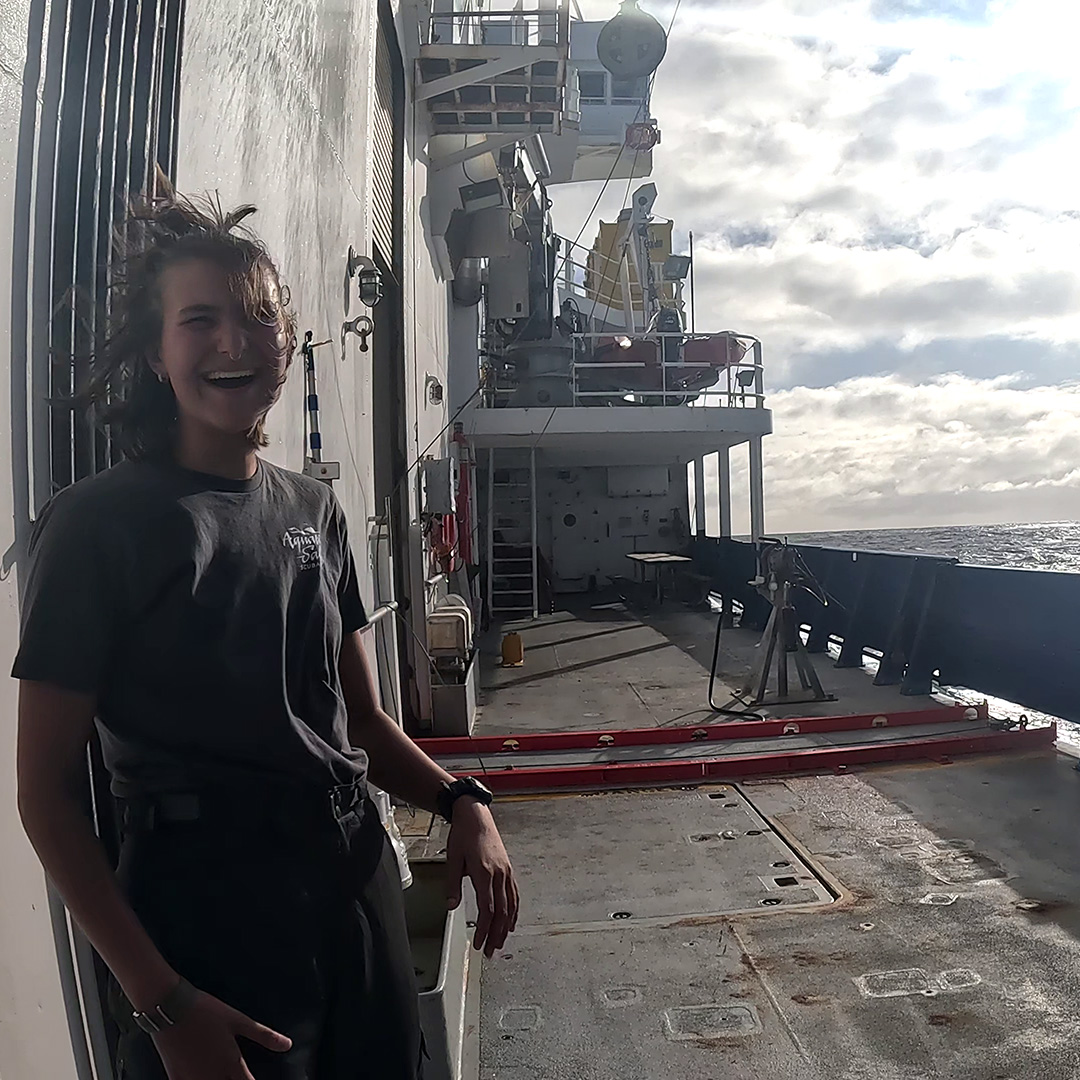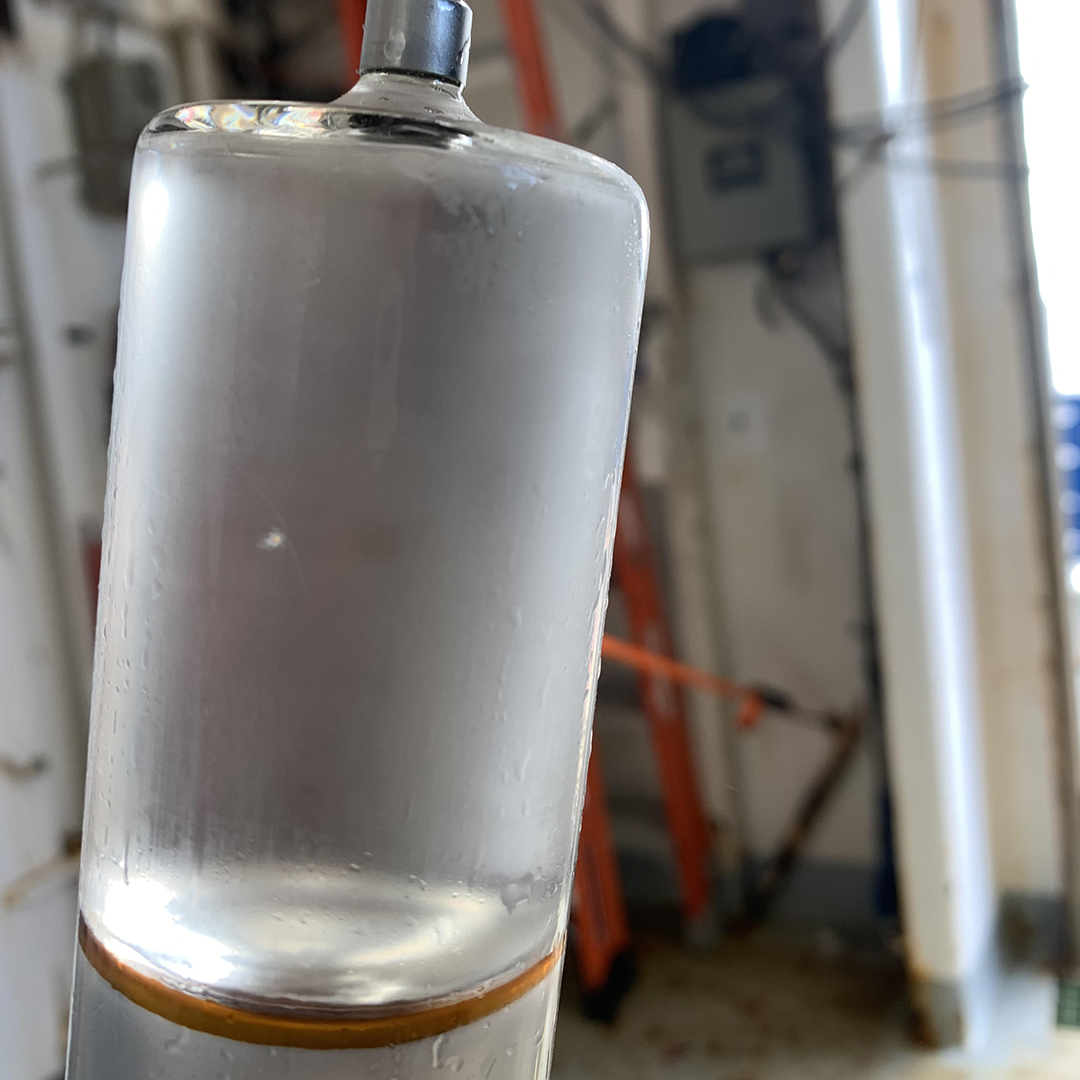GO-SHIP IO5: Two Weeks Out
CTD Watch-standers Log: August 5
As of 0600 today, we have been at sea for exactly two weeks. Time certainly moves differently out here in the Indian Ocean. In fact, we just crossed another 15 degrees of longitude, meaning we experienced another 1-hour time zone change last night. Due to the fact that we will be crossing so many lines of longitude, therefore time zones, we use UTC (also called GMT or Zulu) times on all of our data so that we don’t get confused. As far as local time goes, we have all gotten settled in our routines by now. Personally, I am in love with my shift! I get to wake up bright and early, usually around 0430 to use the ship’s weight-lifting gym and watch the sunrise before heading to breakfast at 0730. Chef Richard cooks a delicious variation of eggs, potatoes, and other breakfast foods every morning. I then begin work at 0800. The first four hours of my shift are aligned with my PI, Mark, the middle four hours of my shift are by myself, then the last four hours of my shift are aligned with my colleague and roommate, Carol. My workday consists of analyzing water samples that Mark and Carol collected during their shifts and then it’s my turn to collect water samples from the CTD. Sampling is definitely my favorite part of the day! I always go outside a little bit early to prepare my sample syringes: if there is a single bubble in the sample, it is considered contaminated! While I am outside, I watch the research technician on duty and the CTD watchstanders recover the CTD from the water. After it is secured on deck, it is time to sample: sometimes we play music on a speaker, sometimes we don’t, but the atmosphere around the CTD is always filled with laughter and chatter. Two days ago, I had quite the pleasant surprise while I was collecting samples. I thought I saw a bubble as I drew water into my syringe, so I tried to get it out by spewing water out of the top. It wasn’t floating to the surface quite like a bubble would have, so I looked closer… and that’s when I saw the antennae! I showed the scientist beside me, and she explained that it was a large copepod. I had no idea they were visible to the naked eye! I emptied my syringe onto the deck where the water flows back to the sea and continued my sampling, but with an extra bit of excitement in the air. Carol had told me that seeing sea life is what boosts the morale of long trips such as this one: whether it’s spotting a pod of whales in the morning, catching a copepod in a sample, or watching the albatrosses flying around the waves, we certainly all feel the adventure of living and working at sea.
~Maggie Gaspar


